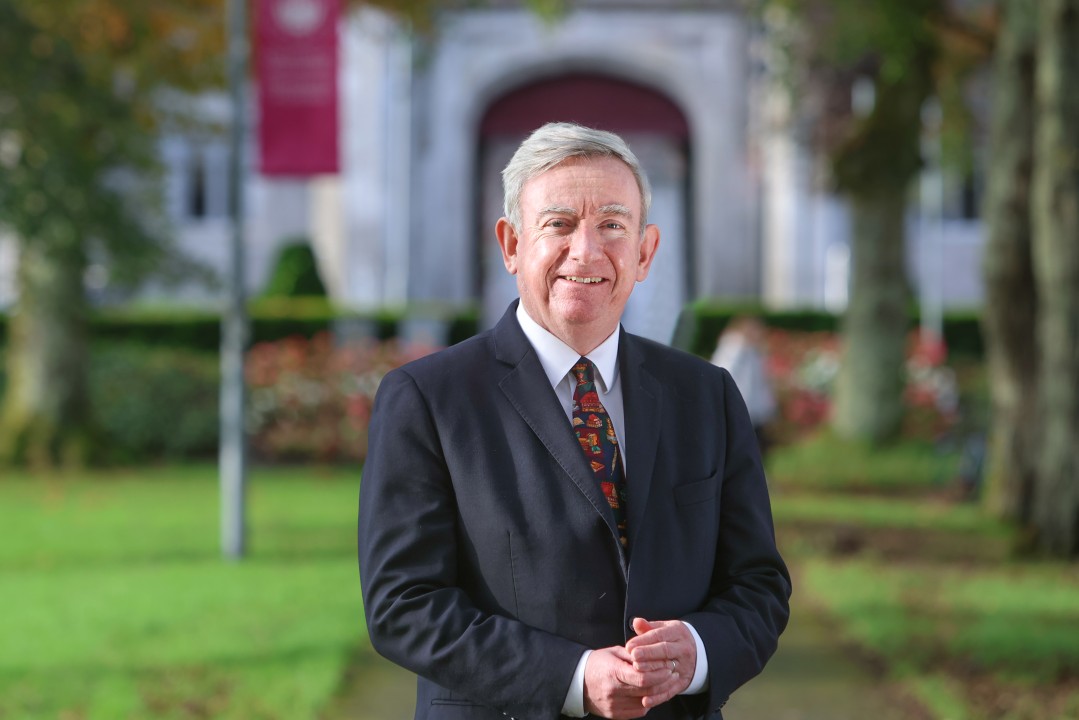
The world with us… or without us
University of Galway was founded in the mid-1840s as Queen’s College, Galway. A university of about 100 students for the remaining part of the 19th Century, it is now a place of 20,000 students. The context has also changed: a university established in Famine times is now a part of and not apart from a very different Ireland, not without its challenges, but a progressive and relatively prosperous place compared with the Famine times of our university’s formation.
This brings to mind an exercise in counterfactual history which, as an exercise of the imagination, has become more fashionable in recent decades. What if University of Galway had not been established when it was and where it was? What if the university did not exist?
Would William King, Professor of Geology at Galway, have first coined the phrase Neanderthal Man in The Quarterly Journal of Science in 1864? Would Alexander Anderson, Professor of Natural Philosophy and the university’s longest serving President, come from Coleraine to be educated at Galway and been the first to explore the concept of ‘black holes’ in the academic literature, in Philosophical Magazine in 1920. Would Emily Anderson, his daughter, have left from Galway so proficient in the German language that she could translate the letters of Mozart and Beethoven and assist the British Foreign Office in World War II espionage?
Would JRR Tolkien, an external examiner in English in the 1920s, have been inspired to imagine a different landscape in The Lord of the Rings than that brought to his mind’s eye by visits to the Burren and to Connemara (although North Wales and Lancashire also lay claim to that). Would Máirín de Valéra have recorded our native seaweed and algae species in such precise detail, cycling the west coast as she did so?
Would Donagh O’Malley have come to Galway from Limerick, been appointed Minister for Education and had such an impact across the generations in introducing free second level education? Would Michael D Higgins have come to Galway from Clare and had such an impact as a political scientist, politician and President? Would Máire Whelan have studied law, going on to become Ireland’s first female attorney general?

Would Galway be the creative place it is? Druid Theatre was established by students from the university in the 1970s, An Taibhdhearc – Amharclann Náisiúnta na Gaeilge – by students from the university and soldiers from the barracks in the 1920s. Baboró, Macnas, the Galway International Arts Festival, the creative infrastructure and architecture of a city, all established by students of this university.
A recent book by two Italian academics identifies Galway, along with the Ruhr Valley, the Research Triangle in North Carolina and Bologna as ‘competitive peripheries’ which have emerged from the shadows of ‘superstar’ capital cities. One of the authors, Giulio Buciuni from Trinity College Dublin, is quoted as saying that ‘Galway, for instance, was one of Europe’s poorest regions in the 1980s and is today home to one of the world’s most dynamic entrepreneurial ecosystems in the bio-tech industry’. Today, eight of the world’s top ten med-tech companies are in Galway. Overall, Ireland is the second-largest European exporter of medical devices producing for the worldwide market 80% of stents and 50% of the ventilators – and Galway is at the core of this ecosystem.
The book identifies three factors which catalyse the emergence of these competitive peripheries: global connectivity, partnerships between local universities and the private sector, and local finance and entrepreneurship. University of Galway is specifically called out as having played a key role, developing bioengineering curriculums which attracted and developed the talent pool for both foreign direct investment and the burgeoning indigenous sector that also emerged to create the well-embedded med-tech cluster that now exists.
This has had a substantive, positive impact on the region. Today, c11,000 people are directly employed in medical device manufacturing in Galway, each supporting a family that in this region would otherwise not be supported.
More profoundly, consistent with our values as a university for the public good, we have in this way – in our teaching, our research and our engagement – had a meaningful impact on the health and wellbeing of people in their time of need. We can think of this in the abstract and we can also appreciate it in the actual, through the very personal view presented by Pádraig Ó Céidigh in this short video.
Galway and our university has changed dramatically since those Famine times when the university was established.
We often consider impact as the world with us in it. What about the world without us?
And what will people say in 100 years’ time about what we did now that will make a difference then?
- Professor Ciarán Ó hÓgartaigh is President of University of Galway.
Inside Sales Executive at Taylor & Francis Group - Academic Books
4moInteresting to take a moment to think about what people will say about us in 100 years' time. What did we do - negative or positive - to impact the future. Our time is brief but our impact lasts a long time.